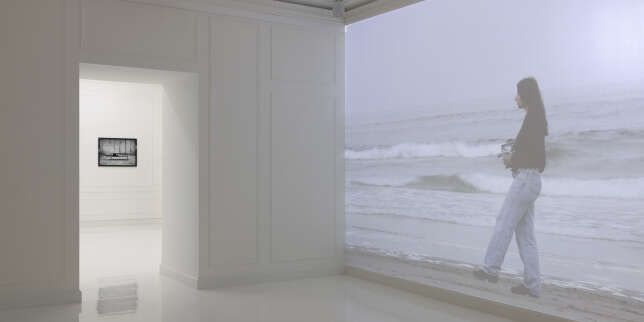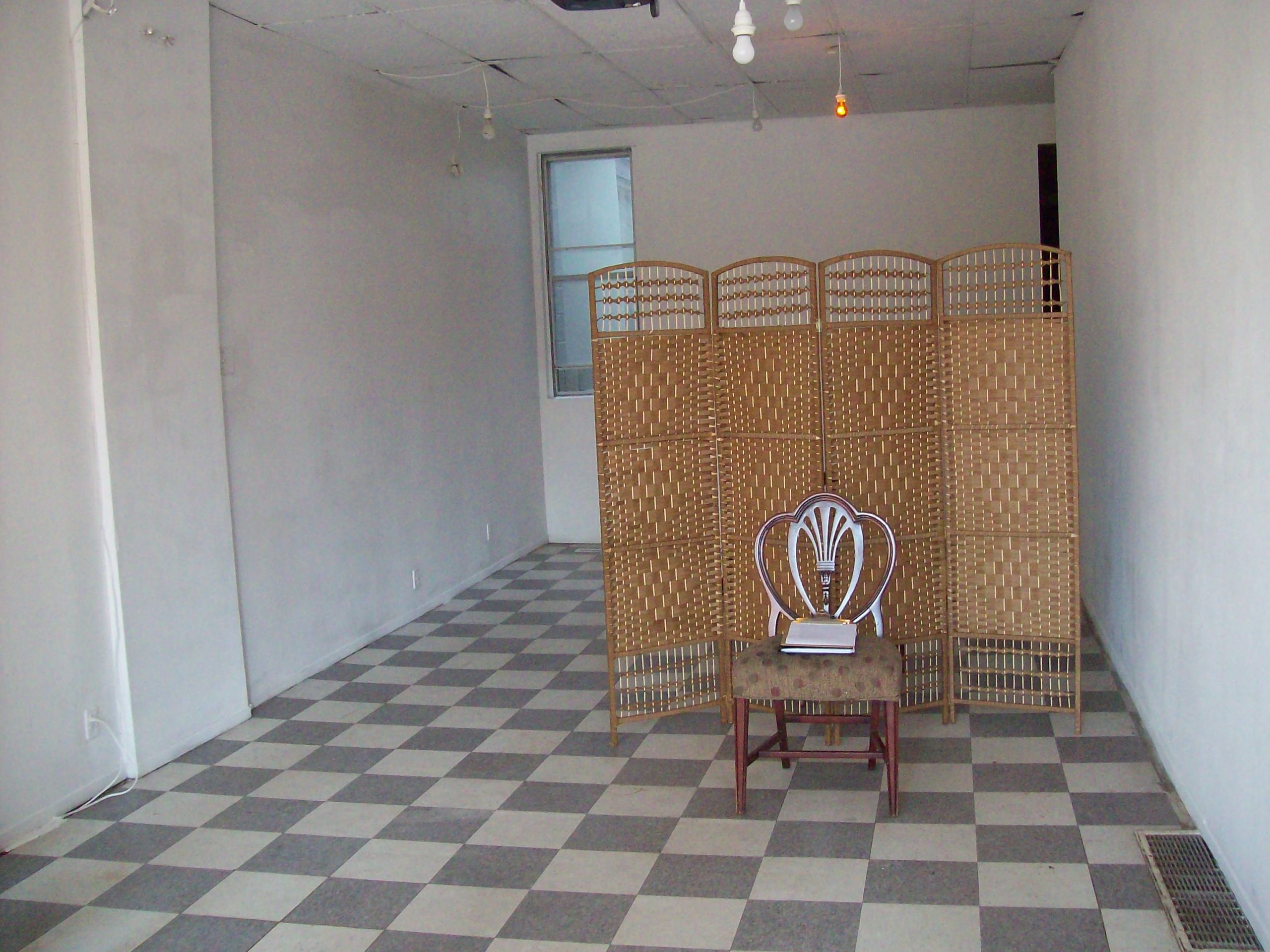Wagon Wheel
2007 - Sculpture (Sculpture)
110 x 80 x 50 cm
Toby Ziegler
Wagon Wheel is a work with a fundamental dynamism that derives both from the rotating movement of the elements suspended on poles and the kicking of the legs of the figure. It is based on a pornographic image by Giulio Romano (ca.1499-1546). Romano had completed Raphael’s frescos in the Vatican after the latter’s death but was not paid for the work. Ziegler relates how in revenge Romano drew pornographic images on the buildings of the Vatican. The Pope erased them but Marcantonio Raimondi (ca. 1480-1534) turned the images into prints, a series called « I Modi », which were widely circulated in Rome and for which he was jailed. The Pope, realising they brought him into disrepute, gathered them all together and destroyed them. Other artists had copied them, however, and such copies exist in the British Museum. Wagon Wheel is the first sculpture of the figure that Ziegler made. He has since moved into figurative painting but he states that he could not have done this without making sculpture first. He believes this particular work is crucial to that development. It was inspired not only by the Romano prints, but also by seeing a sculpture of hands by Rodin. He feels that most of Rodin’s sculptures are too complete for him to be able to work off them. But the sculpture of a hand fired his imagination because of its incompleteness. Wagon Wheel also relates to the sculpture of Ancient Greece which is frequently displayed as a compilation of fragments, with armatures supporting disparate parts and acting as surrogate limbs or body parts.
Toby Ziegler is a British artist whose work first came to view in an exhibition called Expander in 2004. His paintings are based on photographs that he digitally manipulates to render them more abstract. His sculptures are closer to being figures and it is in a figurative direction that his painting is now going. These sculptures, therefore, are important transitional works. Most of Ziegler’s sculptures are made out of cardboard or paper and covered in numerals which he employs to piece them together. Like the paintings, the sculptures emanate from digital images. He uses computer-aided design to generate line drawings and then, with scissors and glue, pieces them together. The forms of his sculptures have a relationship to Cubism, whose spatial complexity Ziegler admires, and perhaps also De Kooning for their sexual overtones. The numerals make oblique reference to his father’s mania for indexing and cataloguing but are also used in scaling up the works. Toby Ziegelr was born in 1972 in London. He lives and works in London.
Colors:
Related works sharing similar palette

© » HYPERALLERGIC
7 Art Shows to See in New York, February 2024 Skip to content A detail of Apollinaria Broche’s “I Close My Eyes Then I Drift Away” (2023) at Marianne Boesky Gallery (photo Hrag Vartanian/ Hyperallergic ) The short month of February still packs a lot of art in New York City, from a survey of the influential Godzilla Asian American Arts Network to Apollinaria Broche’s whimsical ceramics and Aki Sasamoto’s experimentations with snail shells and Magic Erasers in her solo show at the Queens Museum...

© » LE MONDE
Sarah Brahim remonte ses souvenirs dans un maelström de gestes et de sons Cet article vous est offert Pour lire gratuitement cet article réservé aux abonnés, connectez-vous Se connecter Vous n'êtes pas inscrit sur Le Monde ? Inscrivez-vous gratuitement Article réservé aux abonnés Vue d’ensemble de « Sometimes We Are Eternal », exposition de Sarah Brahim, à Lugano (Suisse), en octobre 2023...

© » ARTS EQUATOR
Solid are the Winds: Aeolian Encounters at The 9th Asia Pacific Triennial (Part I) | ArtsEquator Thinking and Talking about Arts and Culture in Southeast Asia Articles Natasha Harth for QAGOMA untitled (giran) (2018), Jonathan Jones in collaboration with Dr Uncle Stan Grant Snr AM January 10, 2019 By Marcus Yee (1259 words, five-minute read) This is the first of a two-part essay on the 9th Asia Pacific Triennial running at the Queensland Art Gallery, Brisbane, Australia, from 24 November 2018 to 28 April 2019...

© » KADIST
Tracey Rose
2001“Maqe II” is at first glance a romantic image of three diaphanous angels hovering in the luminous sky over a South African township...

© » KADIST
Matthew Langan-Peck
2016Plane is an inflatable sculpture in the shape of an aeroplane made from numerous pieces of plastic bags assembled by an iron...

© » KADIST
Teppei Kaneuji
2014In his White Discharge series (2002 to today), arguably his best known works, Kaneuji assembles old toys and plastic scarps into dramatic mounded heaps and covers the surface with white plastic resin, drawing on allusions to landfills, commodity fetishism, and creative repurposing...

© » KADIST
Jonathan Monk
2003Untitled (rolled up) , is an abstract portrait of Owen Monk, the artist’s father and features an aluminum ring of 56.6 cm in diameter measuring 1.77 cm in circumference, the size of his father...

© » KADIST
Ahmet Ögüt
2022Monuments of the Disclosed by Ahmet Ögüt is an NFT series of digital monuments to whistleblowers...

© » KADIST
Jiri Kovanda
1992Untitled (1992) responds to the same principles of an economy of means as the artist’s actions and installations: three empty cardboard boxes which have contained photographic film are piled one on top of the other...

© » KADIST
Miguel Angel Ríos
2012Superb production values and special effects that in the hands of Miguel Angel Rios do not get in the way or distracts from the content and deep essay of this work...










